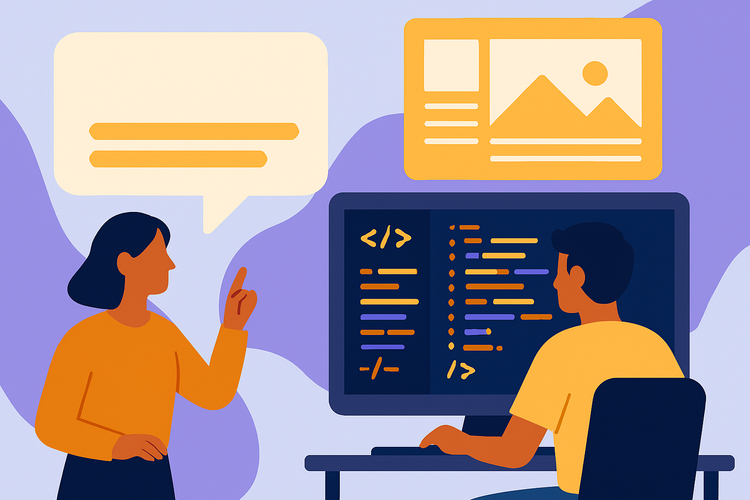20 Practical Prompt Engineering Examples to Improve AI Responses with Suppositions

Introduction
A key element we introduced in our recent article is suppositions, which help narrow down AI responses, making them more relevant and accurate.
This article delves into the practical use of suppositions in prompt engineering. It provides 20 real-world examples, spanning educational content, product development, legal, and marketing. These examples are designed to directly apply to your work, ultimately aiding in preventing AI hallucinations and generating more accurate, relevant responses.
Recap: What is Prompt Engineering?
Prompt engineering is not just a technique. It's an art and science. It's about designing inputs—or prompts—for an AI model to generate the most accurate and contextually relevant responses. This technique is crucial in minimizing AI hallucinations, where the AI might produce fictional or inaccurate outputs. Effective prompt engineering involves not just asking questions but framing them in a way that guides the AI toward providing precise answers. Its importance cannot be overstated.
The Role of Suppositions in Prompt Engineering
In prompt engineering, suppositions are not just hypothetical scenarios or conditional statements. They are powerful tools embedded within prompts. They create specific contexts and constraints for the AI, enhancing the relevance and accuracy of its outputs. By incorporating suppositions, you effectively reduce the response space, guiding the AI to focus on pertinent aspects of the data it has been trained on. Understanding their role is critical to mastering prompt engineering.
For instance:
- Basic Prompt: "What are some common side effects of blood pressure medications?"
- Engineered Prompt with Supposition: "Considering a patient with a history of kidney issues, what are common side effects of blood pressure medications they should be aware of?"
The latter prompt guides the AI to provide a more contextually accurate response.
Practical Examples of Prompt Engineering with Suppositions
Here are 20 practical examples focusing on everyday scenarios in educational content, product development, legal, and marketing:
Educational Content
- Basic Prompt: "Explain photosynthesis."
- Engineered Prompt: "Explain the process of photosynthesis as it occurs in a C4 plant. Highlight the adaptations these plants have for hot and dry climates."
- Basic Prompt: "Describe the water cycle."
- Engineered Prompt: "Describe the water cycle focusing on the role of precipitation in arid regions. How does it impact the local ecosystem?"
- Basic Prompt: "What is the theory of evolution?"
- Engineered Prompt: "Explain the theory of evolution with examples of natural selection observed in finches on the Galapagos Islands."
- Basic Prompt: "Give an overview of World War II."
- Engineered Prompt: "Provide an overview of World War II, focusing on the impact of the Battle of Stalingrad on the Eastern Front."
- Basic Prompt: "What are Newton's laws of motion?"
- Engineered Prompt: "Explain Newton's three laws of motion with examples from daily life, like driving a car or playing sports."
Product Development
- Basic Prompt: "What features should we add to our app?"
- Engineered Prompt: "For a fitness tracking app aimed at runners, what new features could be added to enhance user engagement and track progress more effectively?"
- Basic Prompt: "How can we improve our product?"
- Engineered Prompt: "Considering user feedback highlighting issues with battery life, what are some features we could add to improve our smartphone's" battery performance?"
- Basic Prompt: "What are the latest trends in product design?"
- Engineered Prompt: "What are the latest trends in product design for wearable technology, specifically in terms of health monitoring and user interface?"
- Basic Prompt: "How do we test a new product?"
- Engineered Prompt: "For a smart home device still in the prototype phase, what are the best practices in usability testing to ensure a user-friendly design?"
- Basic Prompt: "What is agile development?"
- Engineered Prompt: "Explain agile development methodologies with a focus on how they can be applied to a startup developing a mobile application."
Legal
- Basic Prompt: "What is a non-compete clause?"
- Engineered Prompt: "For a tech firm looking to protect its intellectual property, what are the critical components of a non-compete clause to include in employment contracts?"
- Basic Prompt: "What are the key aspects of GDPR?"
- Engineered Prompt: "Outline the key aspects of GDPR compliance for a company managing large-scale data analytics across multiple EU countries."
- Basic Prompt: "What is intellectual property law?"
- Engineered Prompt: "Explain intellectual property law in the context of protecting software development innovations and patenting algorithms."
- Basic Prompt: "Describe the process of filing a lawsuit."
- Engineered Prompt: "Describe the process of filing a lawsuit for a small business dealing with a breach of contract involving international partners."
- Basic Prompt: "What are the legal implications of remote work?"
- Engineered Prompt: "Discuss the legal implications of remote work, focusing on data security and compliance with labor laws in multinational teams."
Marketing
- Basic Prompt: "How to improve our social media presence?"
- Engineered Prompt: "For a small business targeting millennials, what are effective strategies to enhance social media presence on Instagram and TikTok?"
- Basic Prompt: "What is content marketing?"
- Engineered Prompt: "Explain content marketing strategies for a B2B SaaS company aiming to increase inbound leads through thought leadership and whitepapers."
- Basic Prompt: "How to measure marketing ROI?"
- Engineered Prompt: "Considering a marketing campaign run on multiple channels like social media, email, and SEO, how can a company measure the ROI effectively?"
- Basic Prompt: "What are PPC ads?"
- Engineered Prompt: "Describe the structure and benefits of running PPC ads on Google for an e-learning platform targeting professional development courses."
- Basic Prompt: "What are some SEO best practices?"
- Engineered Prompt: "For a financial advisory firm wanting to improve its online visibility, what are the SEO best practices for targeting high-net-worth individuals?"
How to Implement Suppositions in Your Prompts
Implementing suppositions in your prompts can be systematically approached with the following steps:
- Identify the Objective: Clearly define what you want the AI to address.
- Create a Hypothetical Scenario: Introduce specific conditions or contexts related to the objective.
- Frame the Prompt: Formulate the prompt with the hypothetical scenario integrated, ensuring it provides enough context for the AI to generate a relevant response.
- Review and Refine: Assess the prompt for clarity and specificity. Modify as necessary to avoid ambiguity.
Best Practices:
- Be Specific: The more specific your supposition, the better the AI can respond accurately.
- Use Relevant Contexts: Ensure the hypothetical scenarios are pertinent to the task at hand.
- Test and Iterate: Trial different suppositions and refine based on the outputs.
Conclusion
Incorporating suppositions into prompt engineering is a powerful technique to improve the accuracy and relevance of AI-generated responses. By providing detailed, context-specific prompts, you guide the AI to produce more accurate and useful outputs for the end-user. As you develop your prompt engineering skills, keep these techniques in mind to prevent AI hallucinations and enhance the overall quality of interactions with AI systems.
Level up your prompt engineering, reduce hallucinations, and experiment with suppositions and other techniques in Wispera – sign up for early access here.
FAQ
- How do suppositions specifically improve the accuracy of AI responses compared to traditional prompt engineering methods?
Suppositions improve the accuracy of AI responses by creating a more focused context within which the AI can operate, effectively narrowing the scope of potential outputs. Traditional prompt engineering often leaves room for broader interpretation, which can lead AI to generate less relevant or more generalized responses. The prompt becomes more specific and conditional by embedding suppositions, guiding the AI to consider particular scenarios or constraints. This method enhances the AI's ability to surface pertinent data and insights that align closely with the user's needs. The AI can filter responses through these tailored conditions, resulting in more precise and contextually appropriate outputs than generic prompts.
- What are some common challenges or pitfalls when implementing suppositions in prompt engineering, and how can they be mitigated?
When implementing suppositions in prompt engineering, several challenges might arise, including crafting too narrow or too broad suppositions. A supposition that is overly restrictive may limit the AI's ability to generate creative or comprehensive responses. At the same time, one that is too vague may not significantly improve the specificity of the output. Ensuring that suppositions are relevant and balanced to the task can be challenging. Additionally, there is a risk of introducing biases if suppositions unintentionally steer the AI towards certain viewpoints or conclusions. To mitigate these issues, it is essential to iteratively test and refine prompts, carefully reviewing the AI's responses to ensure they meet the desired objectives without unintended consequences.
- Can the effectiveness of using suppositions in prompts be quantified, and if so, what metrics or methods are recommended?
The effectiveness of using suppositions in prompts can be quantified through various metrics and evaluation methods. Key performance indicators could include response relevance, accuracy, and user satisfaction measures. For example, one might track how often the AI's output directly addresses the specific conditions set by the supposition or evaluate the usefulness of the responses in achieving particular goals or tasks. User feedback and satisfaction surveys can provide qualitative insights into whether the AI's outputs meet expectations. Additionally, comparing the results of prompts with and without suppositions in A/B testing scenarios can offer empirical evidence of improvement, allowing users to quantify the impact of suppositions on the quality and precision of AI-generated responses.



